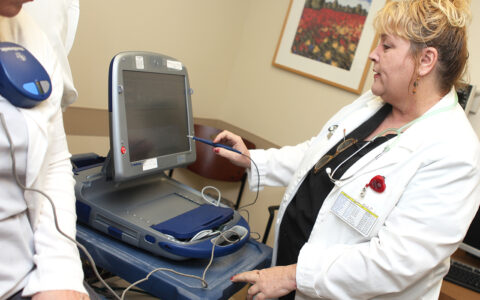Jeffery S. Johns, M.D., medical director of the Vanderbilt Stallworth Rehabilitation Hospital at Vanderbilt University Medical Center, has served the American Academy of Physical Medicine and Rehabilitation (AAPM&R) and the American Board of Physical Medicine and Rehabilitation in multiple capacities over 15 years. He now joins the quality, practice, policy and research committee (QPPR), which influences the AAPM&R’s key positions on everything from research to evaluation of new technology to payment models. Discoveries recently sat down with Johns to discuss how such advocacy is shaping the specialty.
Policy and Reimbursement
Discoveries: In what ways does your new role on the QPPR enable you to influence the field as it moves forward?
Johns: Through my recent work on the reimbursement and policy review committee – that reports to the QPPR – we worked closely on things like CPT codes and the relative value scale that impact how things are valued for the work done across our field. We also evaluated insurers’ changing policies about coverage of particular procedures, equipment or rehabilitation technology. This helped guide the board of governors on appropriate positions.
On the QPPR committee, I’ll now be dealing with broader health policy and working with the legislation committee. This is where the synergy happens. As a member at large, I will be able to guide our organization’s lobbying efforts with CMS, as well as support members and the field with best practices.
Discoveries: What policy trends are impacting PM&R the most?
Johns: The bundled payments shift and the increased focus on cost of care are challenges to our number one mission, which is to get care right for the individual. Historically, our field has been tied to a fairly pricey level of care that takes place in the inpatient rehabilitation hospitals. The focus on this expense can be shortsighted, not accounting for outcomes and eventual downstream costs, risks of medical complications, comorbidities and hospital readmissions.
“Our field has been tied to a fairly pricey level of care that takes place in the inpatient rehabilitation hospitals. The focus on this expense can be shortsighted.”
Because of the high short-term costs, we continue to see a shift toward skilled nursing facilities. One thing that the QPPR committee will consider is how to make sure we are strategically ahead of the game here.
Residency programs are not adequately exposing residents to practicing PM&R care in skilled nursing facilities. We need to help ensure that they understand the business model of those facilities, the medical needs, staffing and therapy delivery models.
Discoveries: What other areas of quality is the AAPM&R watching closely or helping drive?
Johns: Another hot area is the registries. The academy is reaching out to providers across the country to submit data so we can better evaluate populations more broadly for outcomes and quality performance. The academy wants to serve as a resource to culminate that data so that individual providers can evaluate their own performance.
Support for Trainees
Discoveries: How does your work with the AAPM&R influence residency training?
Johns: We have a practice preparedness committee that coordinates with the medical education committee to look at how we are preparing our graduating residents and early career physiatrists to step into practice.
I also sit on the board of directors for the American Board of Physical Medicine and Rehabilitation. Over my years as examiner, and now overseeing oral exams, I have seen a notable improvement in the quality of residents. That tells me we are doing a better job training residents. It also tells me that we probably have a better overall pool of candidates choosing to pursue the field of PM&R.
Discoveries: Why are residents selecting PM&R?
Johns: One reason is the growing trend in interventional procedures. PM&R is starting to own more interventions like spinal injections, ultrasound guided peripheral joint injections and ultrasound guided botulinum toxin injections for spasticity.
Another appeal is that we serve such a broad range of disabling conditions — from sports medicine management to pediatric conditions like cerebral palsy or spina bifida to strokes, brain injuries, amputation and spinal cord injuries. Across all these diagnoses, our focus is on improving function and quality of life. Physiatrists are uniquely qualified to provide a continuum of care and advocate for populations whose treatment is often scattered among specialists.





